Roundabouts
In a roundabout, the vehicle on the right must yield to the vehicle on the left.
In the diagram, traffic indicated by red arrows in yellow lanes must yield to traffic indicated by white arrows in green lanes. Traffic entering the roundabout must yield to traffic in the roundabout.
In this diagram:
- B and C must yield to A.
- E must yield to D while F and D proceed.
- H must yield to G.
When you're leaving the roundabout use your right-turn signal to warn other drivers of your intention to exit.
It's recommended that for safety, entry into the right lane be used mainly when intending to exit at the first available exit point. If you are intending to proceed beyond the second exit, you should drive in the left lane.
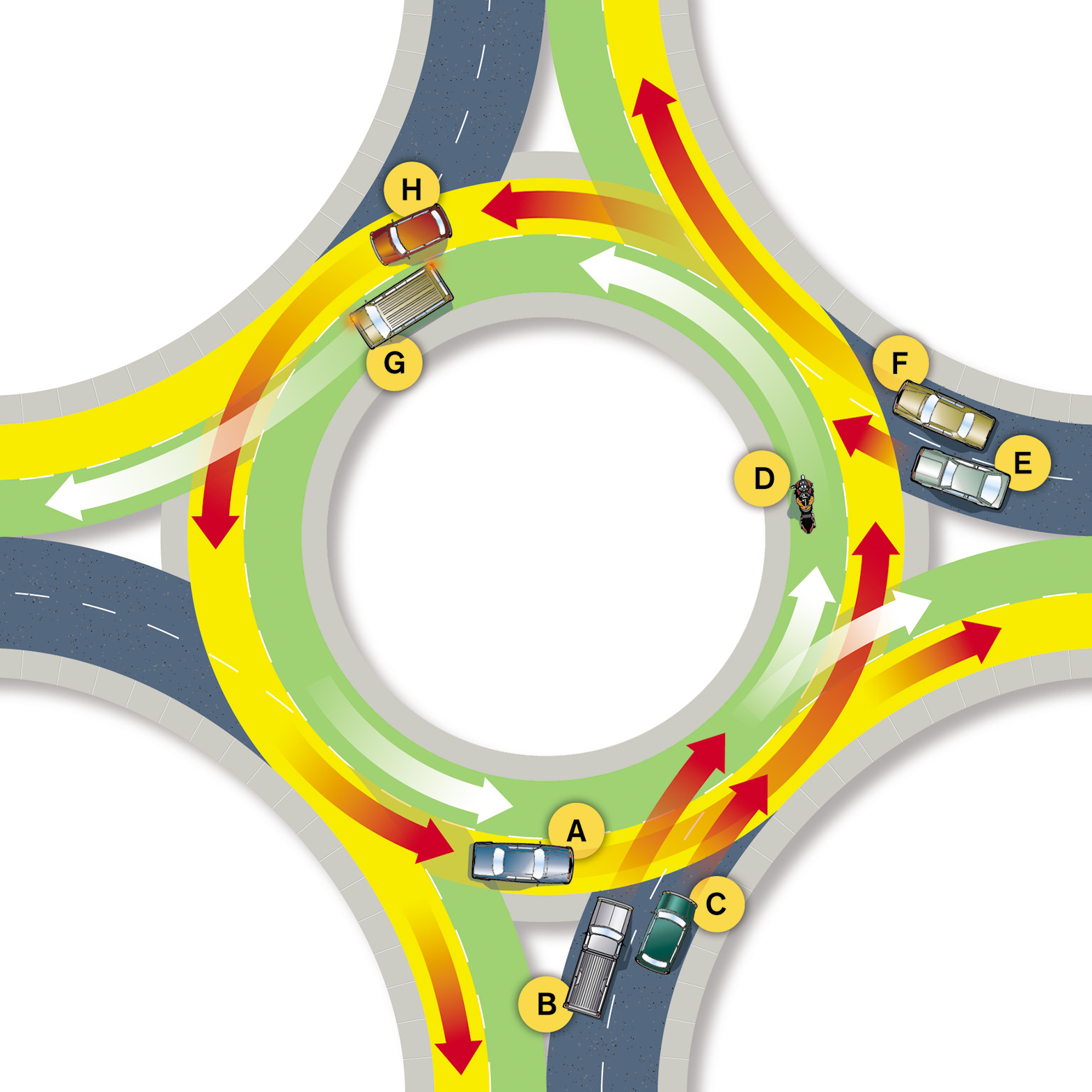
Watch Now: Roundabouts
Diverging diamond interchange
This type of interchange is designed to improve safety and reduce delays by maintaining the flow of traffic. The key feature of this type of interchange is that traffic on the overpass crosses over to the opposite side of the road at one traffic-signal controlled ramp. There’s one on the overpass for Pilot Butte on Highway 1 east of Regina. The crossover allows higher volume left-turn traffic to proceed with little disruption or interruption.
When you encounter this type of intersection:
- Watch for lane designation signs as well as pavement markings to guide you into the correct lane (see Lane selection).
- Traffic going straight – watch for lane designation signs and ensure you're in the correct lane to proceed straight. After the traffic lights, don’t panic; you will be crossing onto the opposite side of the road for a short distance before crossing back onto the proper side at the next traffic lights.
- Traffic turning left – watch for lane designation signs and ensure you're in the correct lane to turn left. After the traffic lights, don’t panic; you will be crossing onto the opposite side of the road for a short distance before making your left turn.
- Traffic turning right – normal right-hand turn procedures apply, so watch for lane designation signs and ensure you're in the correct lane to turn right.
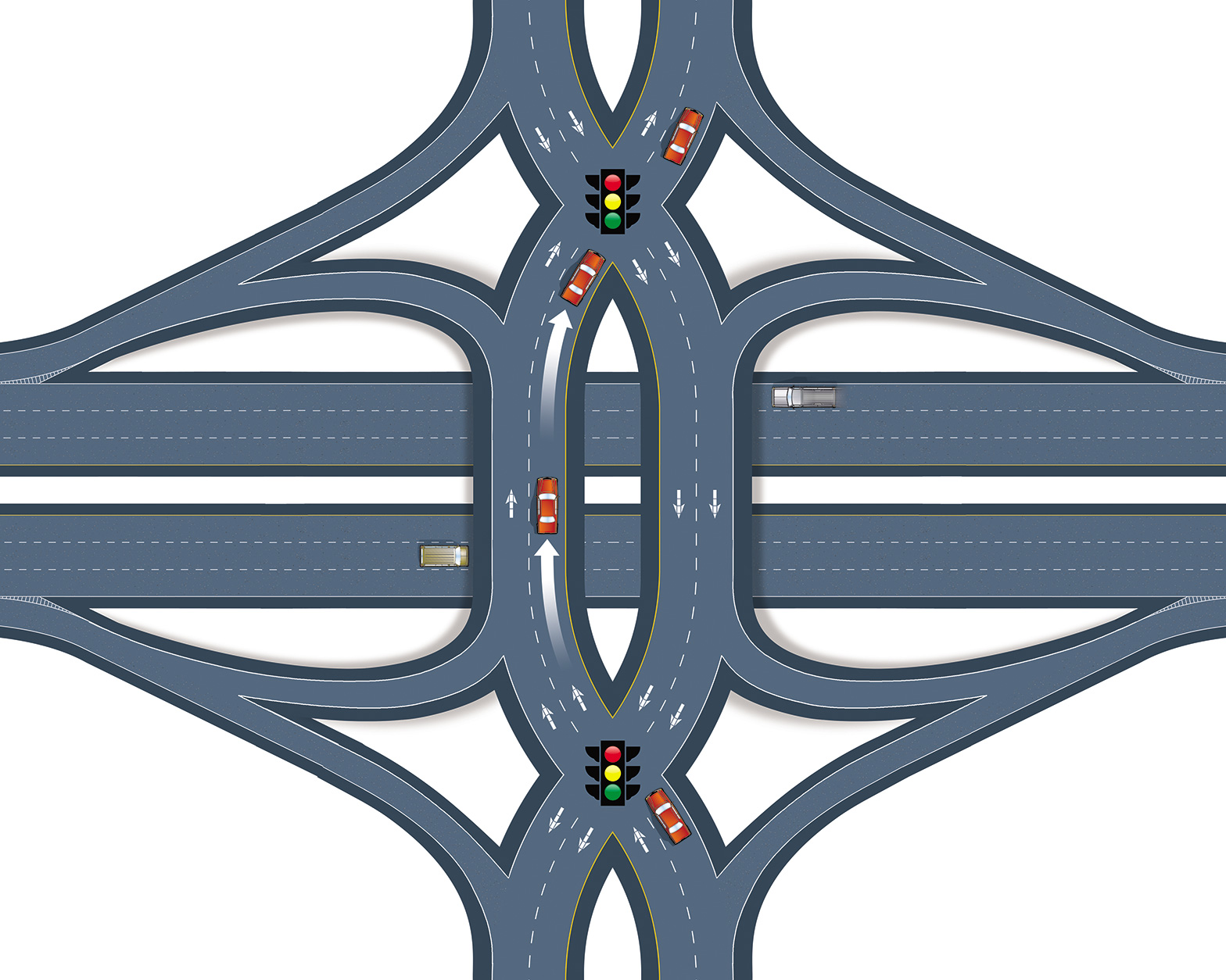 Traffic going straight
Traffic going straightWatch Now: Diverging diamond - Going straight
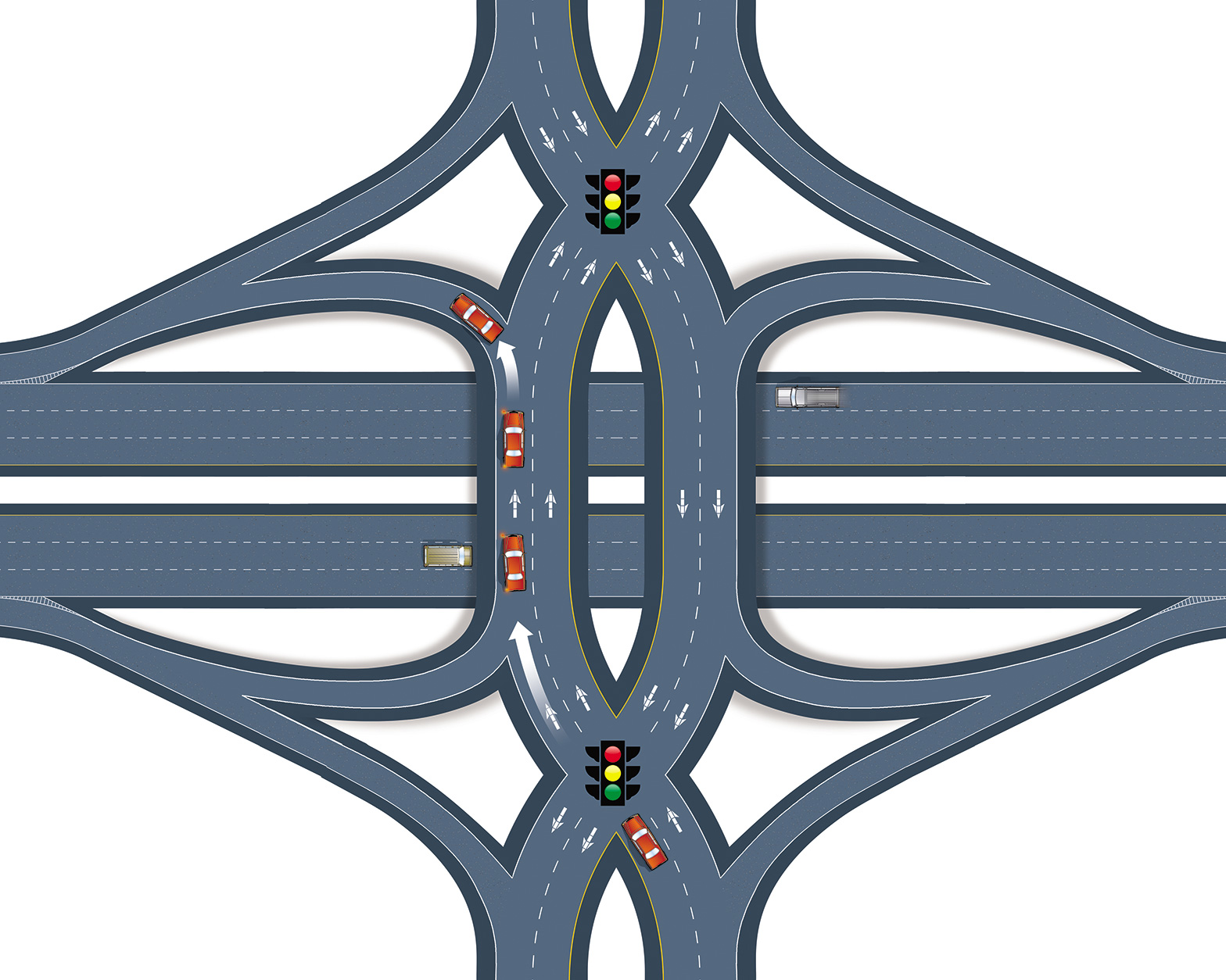 Traffic turning left
Traffic turning leftWatch Now: Diverging diamond - Turning left
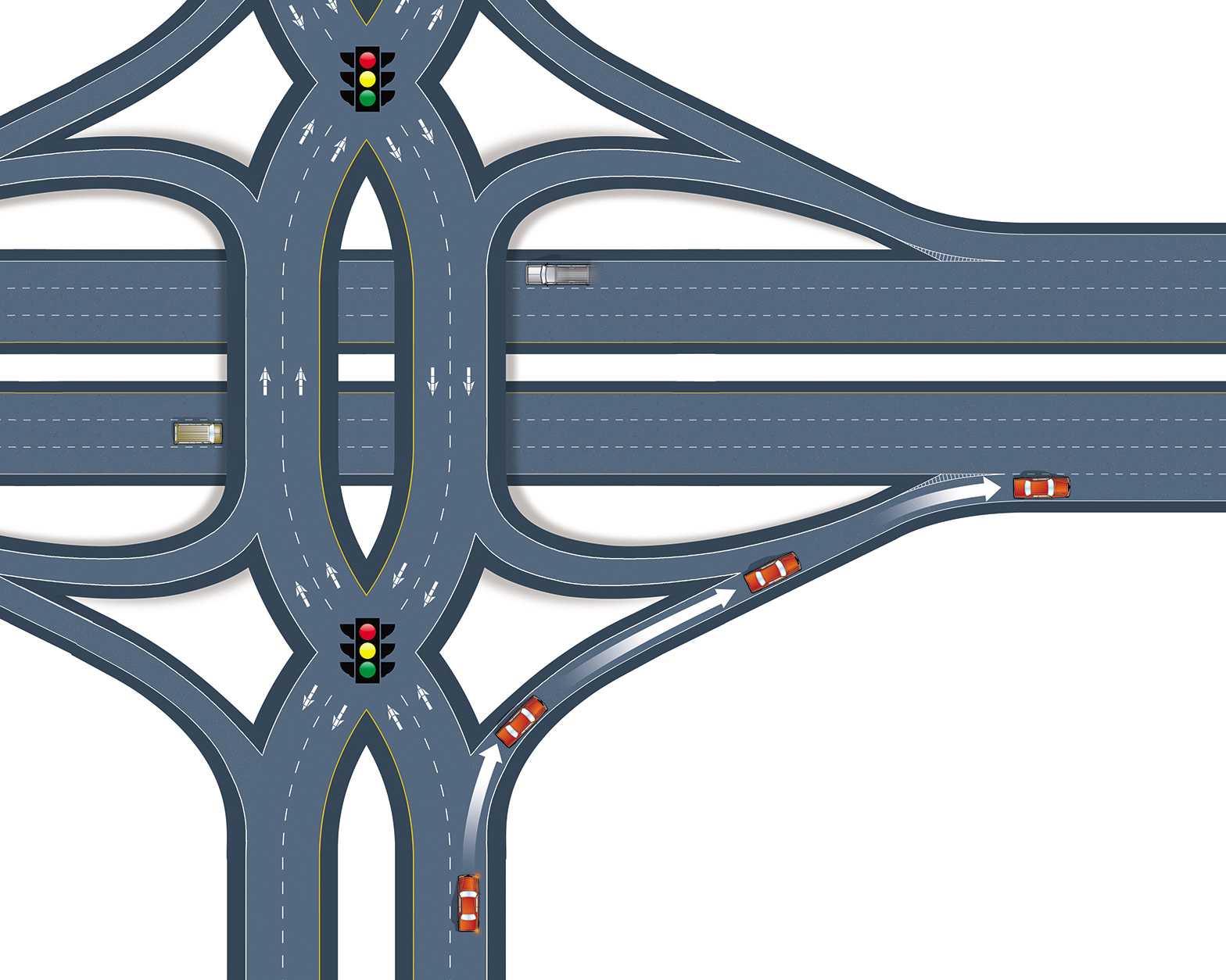 Traffic turning right
Traffic turning rightWatch Now: Diverging diamond - Turning right
Restricted Crossing U-Turn
The restricted crossing U-Turn (RCUT) intersection (also known as a reduced conflict intersection) is designed to decrease collisions caused by motorists attempting to cross a four-lane divided highway.
At an RCUT intersection, drivers always make a right turn, followed by a U-turn. Motorists approaching a divided highway with an RCUT intersection are not allowed to make a left turn or drive straight through to cross the divided highway. Instead, drivers must do the following:
- Using the entrance ramp, make a right turn into the acceleration lane to enter the highway.
- When it is safe to do so, signal, check your mirrors, shoulder check and change lanes into the far-left lane to enter the U-turn lane.
- Complete the U-turn into the acceleration lane going the opposite direction.
- When it is safe to do so, signal, check your mirrors, shoulder check and change lanes into the far right driving lane to continue straight or into the far right turning lane to complete a right turn.
- Remember to shoulder check for each lane when changing multiple lanes.
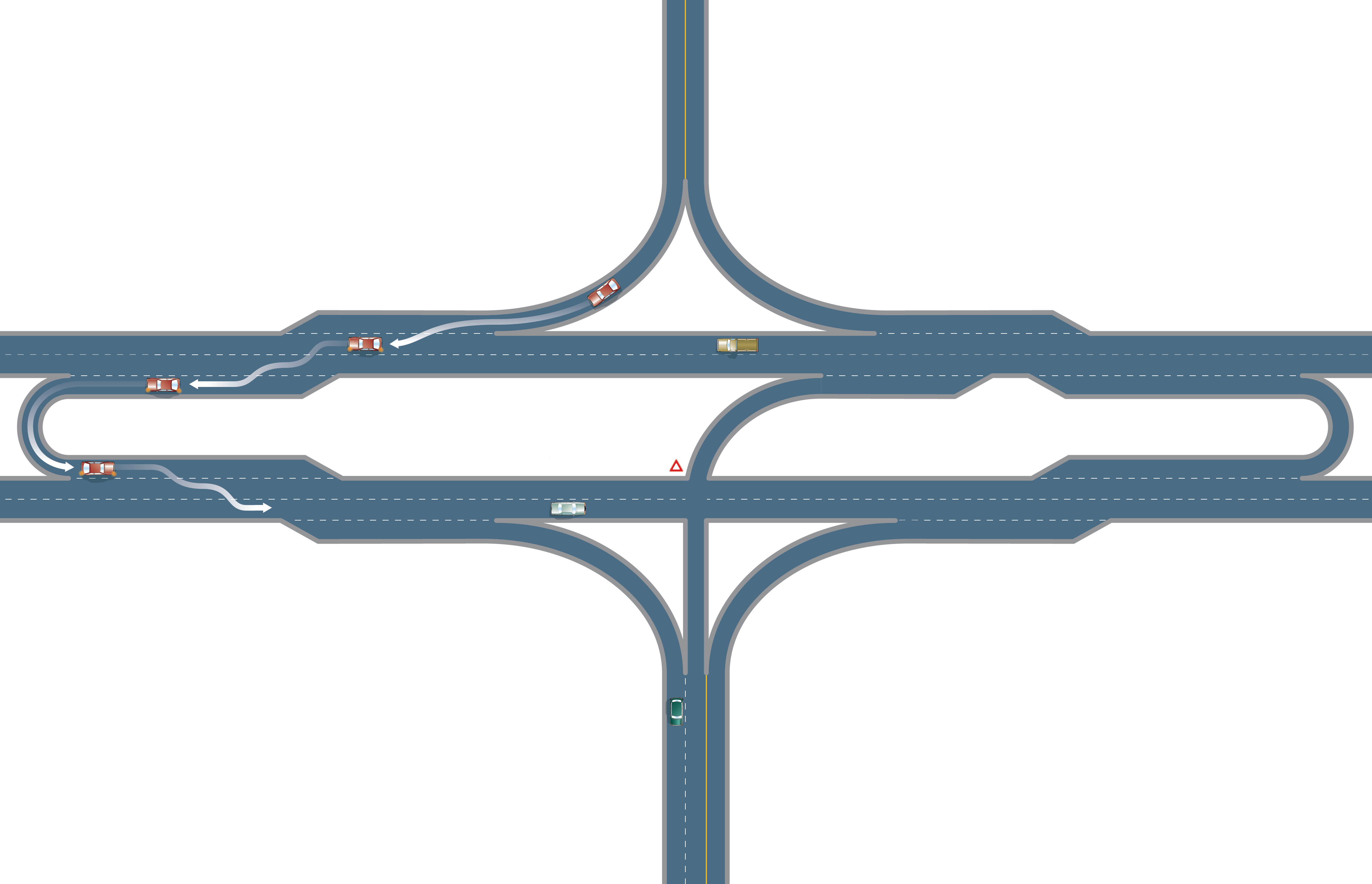
* This is a general representation of the intersection. Actual layout dimensions and lengths may differ from this image.
Watch Now: Restricted Crossing U-Turn (RCUT)